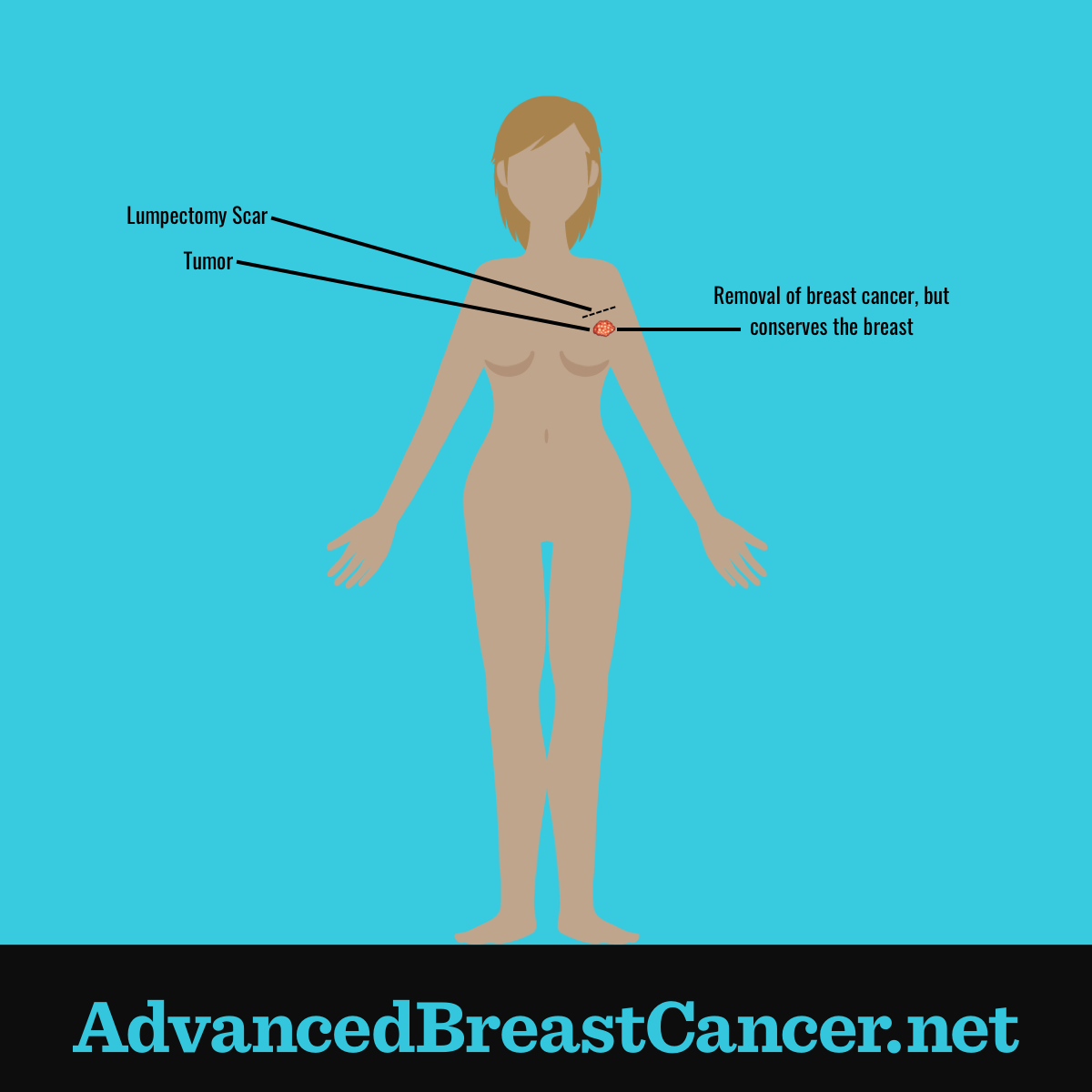Surgery - Local Therapy
Reviewed by: HU Medical Review Board | Last reviewed: July 2025 | Last updated: August 2025
Local therapy refers to treatments that focus on breast cancer in a specific area without impacting the entire body. In contrast, systemic treatments treat the whole body. This means they can treat cancers that have spread throughout the body. Local therapies for breast cancer include surgery and radiation.1
Surgery for breast cancer
Surgery for breast cancer includes:2-4
- Breast-conserving – Removes a portion of the breast
- Mastectomy – Removes the entire breast
Surgery may be also performed on the lymph nodes under the arm (axillary lymph nodes).2-4
Lumpectomy
Lumpectomy is a breast-conserving surgery that removes cancerous tissue and a layer of healthy cells (called clean or clear margins) from the breast. This surgery aims to preserve the appearance of the breast while removing the cancerous area.2
Lumpectomy is often followed by radiation to the area if breast cancer is discovered. This is to reduce the chances of the cancer recurring in that spot.2
Lumpectomy may not be an option for everyone. The following characteristics may mean this type of surgery is not appropriate:2
- 2 or more tumors in different areas of the breast
- Large tumors and/or small breasts
- Other health conditions that make radiation impossible
Partial mastectomy
Partial mastectomy removes a portion of the breast tissue, including the tumor and a lining of healthy tissue. This surgery is also called segmental mastectomy or quadrantectomy. It is a breast-conserving surgery because it leaves some of the breast tissue.3
Skin-sparing mastectomy
A skin-sparing mastectomy removes the breast tissue underneath but leaves the skin of the breast, except for the nipple and areola (the pigmented area around the nipple). This procedure provides more options for reconstruction surgery.4
A skin-sparing mastectomy may not be an option in cases where the breast cancer involves the skin or where the person will not be having immediate reconstruction.4
Nipple-sparing mastectomy
In a nipple-sparing mastectomy, the nipple and areola are kept intact in addition to the breast skin. This maintains the cosmetic look of the breast as much as possible while removing the cancerous tissue.5
Some people may not be a candidate for nipple-sparing mastectomies, such as those with large tumors that are centrally located in the breast or those with other health conditions that may impact healing.5
Modified radical mastectomy
Modified radical mastectomy is a surgical procedure in which the entire breast, skin, nipple, areola, and many axillary lymph nodes are removed. The muscle beneath the breast (pectoralis) is left in place.6
Mastectomy may be recommended for those who:6
- Have had prior radiation to the breast or chest
- Cannot have radiation therapy (which typically follows breast-conserving surgeries)
- Have inflammatory breast cancer
- Have widespread breast cancer or a large tumor that cannot be removed with a good cosmetic outcome
Axillary lymph node dissection
Axillary lymph node dissection is a surgical procedure in which several lymph nodes are removed from the underarm.2
Sentinel lymph node biopsy
In sentinel lymph node biopsy, only the first 1 to several lymph nodes that are the primary drainage point for the breast are removed. To identify which lymph node(s) are sentinel, a radioactive substance or dye is injected into the breast near the tumor. This dye drains to the sentinel node, making it visible for the surgeon to identify.2
Surgery for metastatic breast cancer
Primary treatment for metastatic breast cancer usually involves systemic treatment. Examples include chemotherapy, targeted therapy, immunotherapy, and/or hormone therapy.7,8
Surgery to remove the primary tumor in the breast is controversial. Some research studies have found that removing the primary tumor may improve survival. However, other studies have found little benefit. People with metastatic breast cancer should discuss their options with their doctor to determine the best treatment options for them.7,8
When breast cancer has spread to distant parts of the body, surgery is not usually used to remove these metastases. However, 1 small study found that certain people with metastases to the liver may benefit from having them surgically removed if the cancer:
- Is hormone receptor-positive (HR+),
- Responded to chemotherapy before surgery, and
- Did not increase in size between diagnosis of metastases and surgery
It is not yet known if surgery to remove liver metastases improves outcomes. People should talk to their doctor about whether this is a potential option in their case.9





